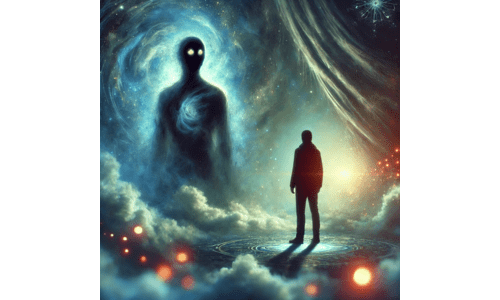Have you ever woken up puzzled after dreaming of a doppelganger? The idea of encountering your exact double in a dream can be both fascinating and unsettling. Doppelganger dream meanings have intrigued people for ages, often raising questions about their symbolic and spiritual significance. Do they represent hidden aspects of your personality, unspoken fears, or even deeper spiritual messages?
Doppelganger dreams often serve as a mirror to our subconscious mind, reflecting inner conflicts, dualities, or unresolved issues in life. Across cultures, they have been seen as omens, warnings, or even a call for self-reflection. Whether you view it from a psychological, spiritual, or cultural perspective, these dreams hold layers of meaning waiting to be uncovered.
In this article, we’ll explore the doppelganger dream meaning in depth. From its historical and cultural interpretations to its psychological and spiritual insights, you’ll gain a clearer understanding of what such dreams may reveal about your inner self and your journey in life.

Understanding Dreams: The Basics
Dreams have intrigued and mystified humans for centuries, acting as a window into our subconscious mind and offering glimpses of our thoughts, feelings, and desires. While many view dreams as abstract or symbolic, they play a crucial role in emotional processing and self-discovery. To better interpret dreams, it’s essential to explore their nature, symbolic elements, and the factors that shape them.
The Nature of Dreams
Dreams are a series of images, sensations, and narratives that occur during certain stages of sleep, primarily during the rapid eye movement (REM) cycle. They range from vivid, detailed scenarios to fragmented flashes of memory. While some dreams feel incredibly realistic, others may defy logic and appear surreal. The nature of dreams often depends on brain activity, emotions, and the events we experience during the day.
Read More: Chocolate Dream Meaning
Symbolism in Dreams
Dreams are rarely literal; instead, they communicate through symbols. For instance, a house in a dream might represent your mind, with each room symbolizing different aspects of your personality or life. Water could signify emotions, while animals might symbolize instincts or desires. Symbols are highly personal and often rooted in your cultural background, personal experiences, and subconscious associations. Understanding this symbolic language is key to decoding the messages within dreams.
The Role of the Subconscious Mind
The subconscious mind is the hidden powerhouse behind dreams. It stores memories, emotions, and unresolved conflicts that often surface in symbolic form during sleep. Dreams allow the subconscious to process and integrate these elements, making sense of experiences or working through challenges that the conscious mind might overlook. It’s the subconscious mind’s way of communicating what requires attention or resolution.
Reflecting Personal Experiences and Emotions
Dreams often mirror your waking life, reflecting personal experiences, emotions, and even stress. A joyful or exciting event during the day might manifest as a pleasant dream, while unresolved tension or anxiety could appear as nightmares. In this sense, dreams act as an emotional outlet, helping to process and reconcile feelings that might otherwise remain buried.
Learn More: Dream About Donkey
The Influence of External Factors
External factors such as sounds, smells, or even physical sensations can influence dreams. For example, hearing a dog bark while asleep might incorporate the sound into your dream scenario. Similarly, stress, medications, or changes in sleep patterns can alter the tone and content of dreams. Understanding these influences helps differentiate between dreams shaped by external stimuli and those rooted in deeper subconscious processes.
The Subjectivity of Dream Interpretation
Dream interpretation is deeply subjective, as symbols and narratives hold unique meanings for each individual. While universal themes like flying, falling, or being chased often have common interpretations, the true significance lies in personal context. For instance, dreaming of a dog might evoke comfort for someone who loves dogs but fear for someone who has had a negative experience. This subjectivity highlights the importance of self-reflection when analyzing dreams.
What is a Doppelganger?
The concept of a doppelganger has long captivated human imagination, appearing across folklore, literature, and modern pop culture. A doppelganger, often described as a mysterious double or lookalike of a living person, is much more than a mere coincidence of appearance, it carries deep psychological, spiritual, and cultural connotations. From ancient beliefs to cinematic portrayals, the phenomenon of doppelgangers reflects humanity’s fascination with identity and duality.
Doppelganger Definition
The term “doppelganger” is derived from the German words “doppel” (double) and “gänger” (walker), literally translating to “double walker.” It traditionally refers to an apparition or double of a living person, often seen as a harbinger of bad luck or a warning of imminent danger. While in modern contexts, the term is often used casually to describe someone who bears a striking resemblance to another person, its historical roots are steeped in mystery and superstition.
In a metaphysical sense, a doppelganger is thought to represent the shadow self or an alternate version of an individual, suggesting duality in personality, morality, or destiny. This idea is commonly explored in both psychological and spiritual discussions, often tied to concepts of self-awareness, identity, and the human psyche.
Historical and Cultural Significance of Doppelgangers
1. Folklore and Superstition
The concept of doppelgangers has appeared in folklore across various cultures. In Norse mythology, the “vardøger” is a ghostly double that precedes a person, performing their actions in advance. Similarly, in Celtic folklore, the “fetch” is an ethereal replica of a person seen before their death, often viewed as an ominous sign.
In many cultures, seeing one’s doppelganger is considered a bad omen, symbolizing impending death, misfortune, or illness. This belief underscores the eerie and unsettling nature of encountering one’s double, which was often associated with spiritual or supernatural forces.
2. Literary Significance
The doppelganger became a popular literary motif during the Romantic and Gothic periods. Writers like Edgar Allan Poe, Fyodor Dostoevsky, and Mary Shelley explored themes of identity, duality, and moral conflict through the use of doppelganger characters. These doubles often served as mirrors of their protagonists’ hidden desires, fears, or unresolved guilt, emphasizing the internal struggles of human nature.
3. Spiritual and Psychological Interpretations
In spiritual contexts, doppelgangers are sometimes seen as manifestations of an individual’s soul or astral body. For example, some traditions view them as a reflection of an alternate self in parallel universes, hinting at the interconnectedness of realities.
From a psychological perspective, the doppelganger can represent the “shadow self,” a concept introduced by Carl Jung. According to Jungian psychology, the shadow self encompasses the repressed or hidden aspects of a person’s personality. Encountering a doppelganger in dreams or visions may symbolize a confrontation with these hidden traits, offering an opportunity for self-awareness and growth.
Doppelgangers in Pop Culture
The idea of doppelgangers has been embraced by pop culture, often depicted in films, television shows, and novels to evoke intrigue and suspense.
1. Movies and TV Shows
Films like Black Swan and Fight Club explore the psychological and symbolic aspects of doppelgangers, portraying them as representations of internal conflict and transformation. Similarly, shows like The Vampire Diaries and Orphan Black use the concept of doubles to drive complex narratives, often involving themes of identity, fate, and morality.
2. Modern Social Media and the “Twin Stranger” Phenomenon
In recent years, the rise of social media has made it easier for people to discover their real-life lookalikes, often referred to as “twin strangers.” Platforms like TikTok and Instagram are flooded with viral posts of individuals meeting their uncanny doubles, sparking fascination and questions about the nature of resemblance and genetics.
3. Doppelgangers in Fictional Universes
Science fiction and fantasy genres frequently incorporate doppelgangers as alternate versions of characters in parallel dimensions or timelines. Examples include the “Mirror Universe” in Star Trek or the use of clones in the Star Wars saga, where doubles play pivotal roles in exploring morality and individuality.
The concept of doppelgangers continues to evolve, blending ancient beliefs with contemporary interpretations. Whether viewed as a symbol of mystery, a psychological mirror, or a narrative device, doppelgangers remain a fascinating lens through which we examine the complexities of identity and existence. Their enduring presence in culture highlights humanity’s ongoing quest to understand the dualities within and around us.
Final Words
The concept of doppelgangers weaves together history, spirituality, psychology, and pop culture, offering a rich tapestry of meanings and interpretations. Whether seen as eerie harbingers in folklore, symbolic mirrors in literature, or intriguing phenomena in modern life, doppelgangers force us to confront our sense of identity and the dualities within us.
Exploring their historical roots and psychological significance reveals how deeply ingrained the idea of doubles is in human consciousness. From ancient myths to social media trends, doppelgangers remain a symbol of curiosity, mystery, and self-reflection.
Ultimately, whether you encounter the idea of a doppelganger in a dream, a story, or even real life, it serves as a reminder of life’s complexity and the interconnected layers of existence. Their presence, whether literal or metaphorical, invites us to reflect on who we are, who we could be, and how our identity shapes our journey through life.
- What Does It Mean to Dream About Cookies? - August 6, 2025
- Can You Decode the Meaning Behind Dreams About Construction? - August 4, 2025
- What Does It Mean to Dream About Coffee? - July 31, 2025




